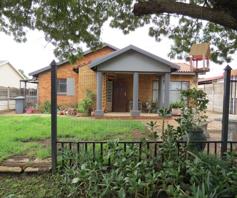Prof Deon Tustin, head of the Bureau for Market Research (BMR) at Unisa, says that since the opening of Protea Gardens, Jabulani and Maponya a paradigm shift started to occur away from shopping outside Soweto to shopping inside it.
A study by the BMR among 690 Soweto households showed that nine out of ten residents are now buying from shopping centres inside Soweto and a mere 10,4% and 7,2% of their shopping are being done at home enterprises and street vendors respectively.
Soweto residents' total retail expenditure is approximately R12,3bn per year, which represents 63% of their total consumer spend. The average household in Soweto now spends R1,285 more inside the township since the opening of the shopping centres. This amounts to about R4,8bn per year.
The study shows Soweto residents are doing weekly shopping at the centres and the most popular days are Saturdays and Sundays, with 60% of them doing their shopping on Saturdays.
"It's clear that the shopping centres in Soweto have changed residents' shopping patterns. They are now buying in bulk," he says.
A shopping trolley at a Soweto mall will typically include eggs, sugar, maize, milk, meat products and non-alcoholic drinks. Among the non-food products are wash and cleaning items and personal care products.
Tustin says the shoppers regard an attractive display of a wide range of goods and competitive prices as the shopping centres' main draw cards.
Interestingly, Soweto residents prefer to purchase durable goods such as furniture and electrical goods from stores outside the township. A total of R375m is spent at places like Sandton City, Nelson Mandela Square, Southgate, Westgate and Northgate.
Alcohol, paraffin, candles, vegetables, fruits and nuts are some of the products bought at stores that aren't located in shopping centres, but still within Soweto.
However, Tustin says the development of shopping centres weren't as successful as expected as far as work creation for residents is concerned.
Less than one person per household has on average been employed by businesses inside the township, while less than two from outside of Soweto are being employed. An average of three people per household is unemployed and economically inactive. – Elma Kloppers, Sake24
Related articles
Readers' Comments
Have a comment or question about this article? Email us now..
Looking for a new home?
To find a property to buy, visit Find a Property and view listings of properties in all areas. Check out Property Reports and get an affordable online report on actual sold prices of properties in your area.
Property News
Click here for more property news articles.
Need a blog?
Start your own blog with a free blog from 24.com.








